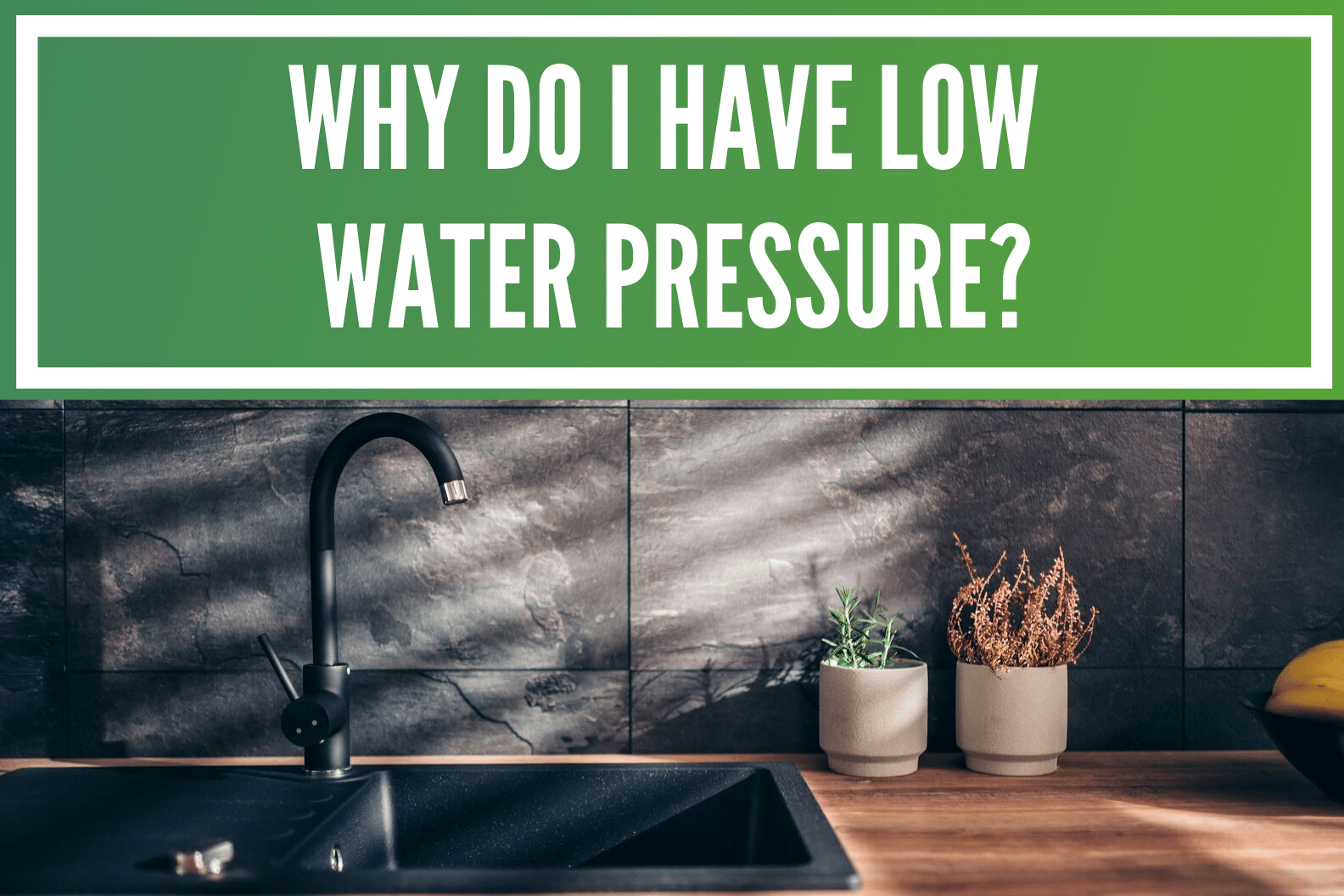You turn on the shower expecting a blast of hot water, but only get a measly trickle of water. While nearly every plumbing failure can be annoying for homeowners, low water pressure is definitely high up on the list! Having been a plumber in Kansas City for over 40 years, I’ve had the opportunity to work with thousands of homeowners on these types of issues and more often than not, a water pressure issue can be fixed with a little bit of troubleshooting.
With this week’s blog post, I’d like to take a deeper look at the reasons why you might be experiencing low water pressure in your home and what you can do to either fix it yourself or have a professional plumber out to get the job done! Having said this, let’s get right into the reasons why low water pressure occurs in the first place.
Reasons for Household Low Water Pressure
Hot Water Heater
One of the first potential culprits of low water pressure is the hot water heater. Take a trip around the house and test out all of the faucets. The kitchen faucet, bathroom faucets and even those outdoors. In doing so, make sure to try them all for both hot and cold water. If the cold water has consistent pressure and the hot water has low pressure, you might have found the problem area right there: the hot water heater!
Even though we would recommend hiring a licensed plumber to work on your hot water heater, there are a few things you can do to get a better idea on if that’s actually the issue! See if there’s any noticeable leaks and check the hot water shut off valve. There’s always a chance that the valve may have accidentally been turned. If you don’t notice anything visible off, either something is off inside the heater or the problem exists elsewhere.
Steel Water Pipes
Do you live in an older home? If so, something to always be mindful of is the state of your pipes. For those that follow us on Facebook or Instagram, you’ve likely seen more than a handful of broken sewer lines that we’ve had to repair. As you can tell, they’re not usually the easiest of repair jobs and can be a big investment for homeowners. Nonetheless, understanding what pipes you have both inside and outside your home, along with the estimated lifespan associated with that material, can save you some time and money investigating the issue.
With this said, on the topic of low water pressure, most older homes are going to possess interior pipes built out of steel. There’s nothing wrong with the material, but over decades of use, there’s going to be the possibility of corrosion inside the pipes. As a result, this creates blockages and ultimately, things start getting stuck and water can’t get through as efficiently. The solution to this will be a repiping project for your home. However, make sure to have your plumber thoroughly check all potential causes, as a repiping should only be done if you truly need it!
Clogged Aerator Screen
As mentioned above, the hot water heater or steel pipes could be at fault if all of your faucets are affected. What if only one of your faucets is experiencing decreased pressure? This could mean you have what we like to call a “clogged aerator screen.” When we discussed when and where to buy new plumbing fixtures, we noted that more often than not, the fixture is in working order, but just needs to be cleaned. This could also be the case in regards to low water pressure. Plus, the best part about this one, you can save a few bucks and check it yourself!
To do so, simply remove the screen and then turn on the water. If it’s running fine, all is good and you’ve found the issue! The aerator likely has some mineral buildup (and possibly some other gunk) that will need cleaned. Put the screen in a water and vinegar mixture, and let it soak for a bit. In the majority of cases, this should solve the problem. However, if you’re still noticing issues once the screen is re-installed, there may be some physical damage and you’ll need to purchase a new screen.
Water Meter Valve
The water meter valve is one of the two primary shutoff valves that are able to control water coming to your home. While, in most cases, this valve is only used by the water company, there is a chance it could not be completely open. If this is the case, I’d guess that you may have recently had some plumbing work done to your house and it accidentally got knocked. You’ll know this by determining if the valve handle is or isn’t parallel to the pipe. If it’s not parallel, then you’ve likely found your problem!
As a side note, on the topic of water meter valves, they aren’t always in the same location in every house. It could be anywhere from the side of the house to underground in the front yard to the basement.
Main House Shutoff Valve
As mentioned in the previous section, there are two main shutoff valves. The second one is referred to as the “home’s shutoff valve.” This one is typically located just inside the house, close by where you see the main city supply pipe come through the foundation wall. It will either be a wheel-like handle (must be turned completely counterclockwise) or a ball-like valve (handle must be parallel to the pipe).
Pressure Regulator
If you’re still without a cause for the issue, it’s time to consider the pressure regulator. For those unfamiliar with this, it’s name says exactly what it does. It regulates and ensures adequate water pressure for your pipes. However, if you’re noticing widespread pressure issues, then this has likely malfunctioned. We would typically test this with a water pressure gauge and the outdoor spigot. If your gauge shows results lower than 52 lbs/square inch, a malfunctioning pressure regulator is the problem!
Various Leaks
One of the nice parts about plumbing failures is the fact that they generally make themselves known! You’re usually able to spot something that seems off and start troubleshooting what the problem may be. Another potential culprit, if you notice water pressure issues in more than one place, could be a leak. Be sure to carefully check around appliances, faucets, under the kitchen sink and so on! Additionally, don’t forget to be mindful of the toilet. Is it constantly running? Maybe it’s making some weird gurgling noises? Any of these could be representative of the being problem behind the low water pressure!
Still Not Working?
Have you done your due diligence and the investigation is still open? No need to worry, this likely means the issue is just a little deeper than initially expected. In this case, it would probably make the most sense to have a professional Kansas City plumbing company get some eyes on it! Our team at Stine-Nichols Plumbing has seen a wide array of residential plumbing issues over the years. Feel free to give us a call 816-348-3481 to get started today. We’ll discuss what you’re currently experiencing in your home, what you’ve already tried to fix the issue and where we should start to get your plumbing issues fixed!


